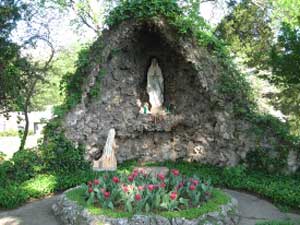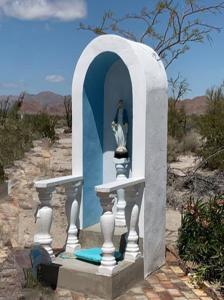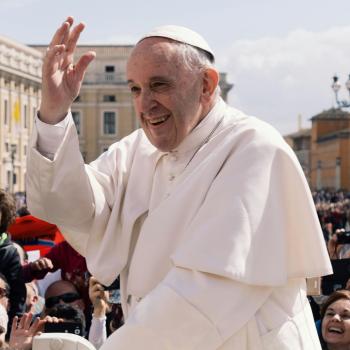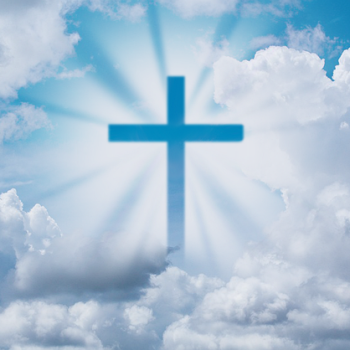We often hear the expression “comfort food,” which refers to the kind of food that makes you feel comforted, as if all is right with the world. It’s familiar and a favorite. Would you believe that having a religious statue can give you much the same feeling?
In a previous blog, I recommended having Catholic items in your home because doing so “will reinforce your faith and provide comfort. They are needed reminders of what you believe and who you are.” https://www.patheos.com/blogs/musingsfromthepew/2021/09/whats-in-your-catholic-home/
In addition, religious pictures and statues evoke the same emotions as family pictures on the wall, it’s just that they are images of your spiritual family.
Connections and Conversations
Every Catholic school I attended had religious statues placed here and there. Most notably, my high school and both of my colleges had a large statue of the Blessed Mother in a prominent place.

My favorite was a replica of the Lourdes grotto that adorned the lawn of my high school. Since I was a boarder, this school was my home, and I could take walks in the evening to go visit Our Lady. She was always there.
Once, at a school reunion, my husband and I went out to see the grotto. I told him that I wanted something similar in our back yard. A man nearby exclaimed, “That’s what my wife always says!” That grotto imprinted on us students.
A statue of the Sacred Heart, the Blessed Mother, or a saint important to you can be like having a friend nearby. It’s someone to talk to. Maybe you don’t get an “out loud” response, but such silent conversations are just as real to your mind and heart.
The statue represents someone in heaven who can listen to you and intercede for you. What we share with that person might have more depth even than what we tell our spouse or best friend.
Backyard Shrine
In March of 2020, just before the pandemic restrictions changed our lives, my husband finished construction on our backyard shrine to the Blessed Mother. We placed in it a two-foot statue of Our Lady of Grace because she seems so warm and welcoming.
We had a dedication ceremony with a group of our friends. Our pastor came out to bless the shrine, we all said the rosary (listening to the recorded version by Vin Scully) and then had lunch together. It was a lovely occasion.
In the lonely isolation of the months that followed, we at least had Mary to visit. We found that it is comforting to know that she is there, always available for some private time together.

My husband is a convert, but the Baptist in him peeks out occasionally. He chafes at confession and Lenten sacrifices and sometimes has to be nudged awake during a homily. Our backyard Mother Mary has affected him though.
I think I cried the first time I looked out my window and saw Mr. Tough Guy kneeling at the shrine in prayer. Miracle of miracles! Would such spontaneous prayer have happened if we hadn’t had an on-site invitation to devotion? I think not.
Reminder of Values
A religious statue in the house is a reminder of how we want to live. If you are angry, frustrated or facing a moral dilemma, looking at the statue is like hearing a voice say, “I’m right here. Let’s talk this out.”
Just as pictures of our family bring back fond memories, so can religious statues and pictures remind us of our Catholic faith and the values to which we adhere. If Catholicism is out of sight and thus out of mind, we can lose track of God in our lives.
Whether you put St. Francis in your garden, have a special outdoor spot for prayer, or place a picture or statue indoors, you might be surprised at the companionship and respite it provides. For me, a walk out to our shrine is my daily “sanity” break.
It is a comfort to me to be able to look out my window and see Mother Mary, ever serene, ever loving. God and His saints are on this journey of life with us, and their impact is more obvious when we make them visually present as our daily companions.
.












